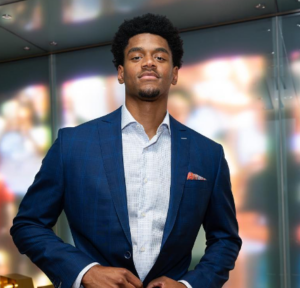Adrian Wojnarowski’s contributions to NBA reporting have forever changed how fans experience the game. His ability to uncover stories and present them with precision and authority set a benchmark that few can match
His reflections on leaks and the media’s role in the NBA offer a fascinating glimpse into the intricacies of sports journalism. For fans, players, and insiders alike, his career serves as a reminder of the power of storytelling in sports.
In many cases, leaked information appears calculated, serving a specific agenda. A team might leak trade discussions to gauge public reaction or apply pressure to an opposing party.
Similarly, agents or players could use the media to influence negotiations or signal their discontent. However, Wojnarowski emphasizes that not all leaks are part of grand schemes. Often, the release of information is far less deliberate.
With years of experience breaking high-profile stories for ESPN and Yahoo Sports, Wojnarowski’s insights highlight the complexities—and occasional simplicity—of how sensitive information becomes public knowledge.
His observations, framed by his new career path post-retirement from reporting, shed light on the interplay of human behavior and strategic motives in the NBA’s information ecosystem.

Also Read: Who Is Bucks New Head Coach Adrian Griffin? Every Details You Need To Know
Table of Contents
Adrian Wojnarowski’s Impact on NBA Reporting
Adrian Wojnarowski, widely regarded as one of the most influential figures in NBA media, has left an indelible mark on sports journalism.1
Over his decades-long career, “Woj,” as he’s affectionately called, was synonymous with breaking some of the league’s biggest news.
His transition from insider to retiree not only closes a significant chapter in sports reporting but also opens up discussions about the dynamics of information leaks and media ethics in the NBA.
Appreciate all the kind words and concern but I’m going to be fine. My goal in sharing a prostate cancer diagnosis is to encourage screening and testing among men. Early diagnosis will make all the difference for me —- and many others too. https://t.co/7xiGfC5RNw
— Adrian Wojnarowski (@wojespn) December 5, 2024
The Unprecedented Leak: Philadelphia 76ers Team Meeting
Team meetings are traditionally private affairs meant to foster camaraderie, address internal issues, or course-correct a team’s performance.
However, the Philadelphia 76ers’ meeting following their November 18th loss to the Miami Heat defied expectations. Within 24 hours, insiders like Shams Charania revealed details of the meeting, sparking widespread debate.
The focal point of the leak was Tyrese Maxey allegedly calling out superstar Joel Embiid for tardiness to practice and team functions. Such revelations, normally kept under wraps, raised questions about the mechanisms behind these leaks.

Adrian Wojnarowski’s Perspective: The “Gossip League”
Appearing on the “7 PM to Brooklyn“ podcast, Wojnarowski shed light on how sensitive information from private team settings makes its way into the public domain.2
He explained that the NBA operates within a culture of gossip, where information flows quickly from one source to another.
“If something happens in front of everybody in the locker room, here’s what happens: Player leaves the locker room, calls his agent like, ‘Holy s***, you won’t believe.’ Assistant coaches are in there, equipment guys are in there. It’s a gossip league, they can’t wait to tell everybody what crazy thing happened.” (40:22)
This insider’s perspective underscores the interconnected web of agents, staff, and players who contribute to the rapid dissemination of private matters.
Lessons for Teams: Managing Internal Information
Organizations must learn to manage internal information more effectively to prevent leaks. This might involve fostering a culture of discretion, limiting access to sensitive discussions, and emphasizing the importance of trust.
While it’s impossible to eliminate leaks entirely, proactive measures can reduce their frequency and impact.
Wojnarowski’s insights into the NBA’s culture of gossip are a testament to his deep understanding of the league.
As he reflects on his career, Woj has the unique perspective of having witnessed the evolution of NBA reporting from traditional outlets to the fast-paced digital age. His commentary continues to provide valuable context for understanding the nuances of the league.
With Wojnarowski retired, the future of NBA media will likely see new voices emerging to fill the void. Social media platforms, podcasting, and alternative forms of content are becoming increasingly important in shaping how fans consume basketball news.
While insiders like Charania lead the charge, the next generation of reporters will face the challenge of maintaining credibility in an ever-changing media landscape.

Adrian Wojnarowski’s Retirement
Shock to the NBA Community
Wojnarowski’s retirement in September 2024 marked a turning point for NBA journalism. For years, his timely “Woj bombs”—breaking news delivered with unmatched precision—were a staple of NBA coverage.3
His departure from ESPN not only surprised fans but also left a void in the sports media landscape. It also signified a shift in how major sports stories might be reported moving forward.
Tyrese Maxey and Joel Embiid: A Case of Team Dynamics Gone Public
The alleged confrontation between Tyrese Maxey and Joel Embiid provides a glimpse into the often-unseen dynamics of professional basketball teams.
Maxey, a rising star, addressing Embiid, the franchise cornerstone, shows a willingness to hold even established players accountable.
This incident, while controversial, highlights the complexity of maintaining harmony in teams with diverse personalities and hierarchical structures.

The Role of Agents in Information Dissemination
- Agents play a pivotal role in the NBA ecosystem. They are not just representatives for their players in contract negotiations but also key players in shaping narratives around their clients.
- As Wojnarowski noted, players often confide in their agents immediately after significant events.
- These agents, in turn, may share details with insiders to either protect or promote their clients. This symbiotic relationship between agents and media figures is integral to how stories emerge and evolve in the NBA.
- The existence of insiders like Wojnarowski and Charania adds excitement and immediacy to the league, but it also has its drawbacks.
- While breaking news keeps fans engaged, it can disrupt team dynamics and strain relationships between players, coaches, and management.
- Leaks, such as those from the Sixers’ team meeting, often create unnecessary distractions, leading to public scrutiny and internal discord.

Also Read: Fans React to Reports of Bronny James Spending Most of His Time with South Bay Lakers
Adrian Wojnarowski’s Legacy: Redefining Sports Journalism
Adrian Wojnarowski’s career is a masterclass in persistence, networking, and journalistic integrity.
Starting from humble beginnings at small newspapers, Woj built a reputation for accuracy and reliability.
His approach set a new standard for sports reporting, blending traditional journalism with the immediacy of social media. As he steps away from the limelight, Woj leaves behind a legacy that will inspire future generations of sports journalists.
With Wojnarowski’s retirement, Shams Charania has emerged as the league’s go-to insider. Charania’s coverage of the Sixers’ team meeting is a prime example of his ability to deliver timely and impactful stories. However, filling Woj’s shoes comes with immense pressure.
The media landscape is more competitive than ever, and maintaining credibility while breaking news at lightning speed is no small feat.
The Ethics of Reporting Sensitive Information
The Sixers’ leak reignited debates about journalistic ethics. Should media outlets report on every piece of information they receive, even if it stems from confidential settings?
While fans crave transparency, some argue that airing private matters undermines trust within teams and invades personal boundaries.
Leaks like the Sixers’ team meeting can have lasting effects on team culture. When private disputes become public knowledge, they often lead to finger-pointing and erode trust among players and staff.
For a team like the Sixers, already navigating the pressures of championship aspirations, such distractions can derail their focus and chemistry.

Adrian Wojnarowski’s Blunt Analysis
Gossip Over Strategy
Addressing the subject candidly, Wojnarowski dismantled the perception that every leak is part of a conspiracy.
“It’s not always sinister,” he remarked, refuting the idea that leaks are always designed to hurt a particular player, coach, or organization. Instead, he attributes much of the information flow to human nature.
“Mostly, it’s guys just can’t shut up. They just gossip and then it gets out,” he said. This frank take highlights an essential element of NBA culture—relationships.
The league is built on interconnected networks of players, executives, agents, and media professionals. Information often flows naturally through conversations within these circles, with no ulterior motive other than casual chatter.
The Dual Role of Media in NBA Leaks
Wojnarowski’s perspective brings attention to the media’s role in disseminating leaks. As a seasoned insider, he was frequently on the receiving end of sensitive information.
Journalists like Woj operate in a delicate space where relationships with sources must be balanced against their duty to inform the public.
Leaks can be a journalist’s lifeblood, but they must navigate the ethical challenges of verifying information and considering its potential impact.
For Wojnarowski, his success stemmed from trust—sources confided in him, knowing he would handle their stories responsibly. However, he also recognizes that not every leak is driven by journalistic integrity.
View this post on Instagram
The Philadelphia 76ers’ Situation: A Case Study in Leaks
The Philadelphia 76ers’ ongoing turmoil offers a recent example of how leaks shape public perception.
Reports regarding player dissatisfaction, internal strife, and potential trades have dominated headlines, creating a media storm around the franchise.
In situations like these, leaks often raise questions about their origins. Are they from frustrated players? Front-office executives seeking leverage?
Or perhaps rival teams looking to destabilize a contender? Wojnarowski’s assertion suggests that, in many cases, the answer could be simpler: someone, somewhere, just couldn’t keep the information to themselves.
The Strategic Value of Leaks in NBA Negotiations
While Wojnarowski downplays the intentionality of some leaks, it’s undeniable that strategic leaks play a critical role in shaping outcomes in the NBA.
In trade scenarios, for instance, leaks can create pressure on teams to act. A player rumored to be on the trade block might see their market value shift based on how the story is framed in the media.
Similarly, contract negotiations can be influenced by leaks. When details of an offer or counteroffer are made public, it can sway public opinion, affecting the leverage of both sides.
Agents, in particular, are known to use media leaks as a tool to benefit their clients, whether to build hype or to expedite stalled discussions.
Also Read: Who Is Jaxson Hayes? Basketball Player Contract, Career And More Explained




